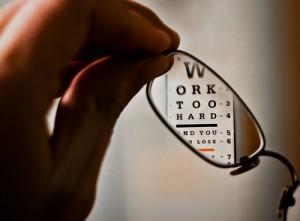In February, I bought a year’s supply of contact lenses at Costco after searching for the best price. One of the main reasons I decided to go with Costco was the $20 rebate on a year’s supply, which brought their price down to the lowest.
Costco allows online rebate claim submission, and it was pretty simple. I filled out a form with information that was readily available on my receipt. I figured it would be several weeks, maybe even a couple months, before I received my check, so I kind of forgot about it.
Yesterday it was time to replace my contacts with a new pair of lenses. For the first time since I’d submitted the claim, I thought about my rebate. It had now been over two months since I submitted it, and I haven’t received a check.
I logged onto the Costco site and checked the status of the claim using the claim number they emailed me. It was so easy that I couldn’t believe I hadn’t checked it before. According to their records, the check was sent on March 17 and should have arrived 7-10 business days after that. It didn’t.
When I called the rebate hotline, they were extremely helpful. Within about 5 minutes they were able to determine that my rebate check had been sent and returned to them. The customer service rep assured me that a new check would be in the mail by Monday sent by certified mail to ensure delivery.
While the hotline was extremely helpful in resolving the problem, I can’t help but wonder what would have happened if I hadn’t thought to check on it. It’s only $20, an amount that many people might not bother to follow up on. If I hadn’t called last night, I probably never would have received a check.
It would have been nice if they had recognized the problem and resolved it without a call, but to be fair I don’t really expect them to track that sort of thing for me. It’s my money, after all. If I don’t care enough about it to track it, why should they?
People who regularly submit rebates for Walgreens and other stores usually have intricate systems for tracking this sort of thing. I don’t regularly submit rebates (only when I happen to buy a product that offers one), so I easily could have let it slip my mind.
When I bought my computer, it came with a $200 rebate. You better believe I tracked that one. I sent the required materials by certified mail to ensure that they weren’t lost, and frequently checked the status on my claim until I received my check. After all, $200 is a lot of money.
But $20 is just as important when it comes to getting a little money back after a purchase. It’s so easy to submit and track rebates these days, there’s no reason to lose track of that money. I takes more trouble to clip coupons than it did to log in and check on that rebate, and coupons usually only save cents. I would be careful to keep track of a $20 bill; why lose track of a $20 rebate?


